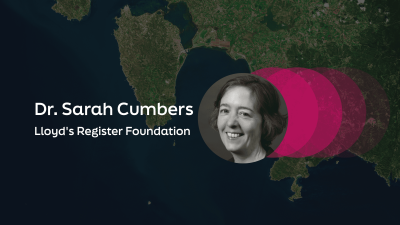
Improving access to redress for workers vulnerable to violence and harassment in South Asia
Experts discuss the factors that make some workers more vulnerable than others to violence and harassment.
This page is approximately a 3 minute read
This page was published on

The purpose of the World Risk Poll is to make a tangible difference to safety across the world. It is not enough just to collect the data – although this is a major undertaking in its own right given the unique scale of the poll, a world-first for safety and risk. We now must ensure that the data and insights are used effectively to make a difference to people’s lives across the wide range of risks covered by the poll, and more broadly.
There are a number of planks that must be in place to convert data into action. Building links to key organisations is crucial. Our existing partners such as Sense About Science and the US National Safety Council are already working with us to convert the World Risk Poll findings into strategies for change, and many others including three UN agencies are considering how to embed the data into their work. Our goal from the outset was to provide a powerful data set through which each organisation can explore, through their own lens, the risks borne by communities around the world, and use the findings to empower these communities to take action.
In addition to providing novel data to complement official sources, the poll findings have generated invaluable insights on risk perception, trust, and how to influence understanding of risk through different communication channels. The value of these findings has engaged the interest and active participation of organisations with the power to effect change.
There is also a recognition that the findings revealed so far are just the start. The World Risk Poll data is now openly available, and partners are excited by the opportunity to dig deeper into the data through focused analysis and combination with other data sources. As the poll itself has shown, reaching people whose safety is threatened by different risks requires a tailored approach. Factors such as gender, geographical location, age, education and socio-economic circumstances all have a huge impact both on experience of risk, and on the way information about risk is sought and interpreted. Further analysis will help our partners to more effectively hone their work with different communities.
The World Risk Poll will be repeated three times in the next six years, and a range of organisations have contributed to the design of the questionnaire for 2021 to ensure that the data generated can be used to influence action. By asking some of the same questions each time we will also generate data showing how global risk perceptions, and experience of risk, change over time. It is essential that local initiatives inspired and supported by the poll include plans for follow up that enable their impact to be measured. Demonstrable impact will influence a wider network of partners to use the accumulated data from the poll, alongside other forms of evidence, to influence the design of safety interventions.
Ensuring the tangible conversion of the World Risk Poll data into measurable actions is central to the objectives of Lloyd’s Register Foundation. We want to see an impact on the risks people experience, and on how safe people feel, through empowerment of individuals and communities. Each intervention or interaction that raises awareness of harm from unsafe food and relatable steps to prevent it, creates safe spaces for workers fearing violence and harassment, or empowers internet users to question the validity of the information they see on line so they are better equipped to make a decision, confirms the value of World Risk Poll.